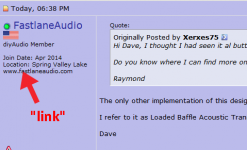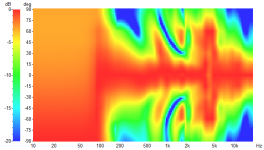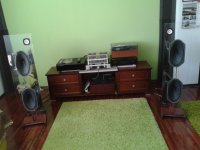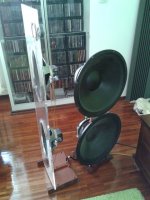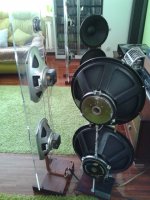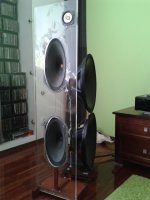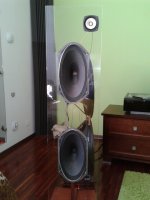From LspCAD website:
www.ijdata.com/
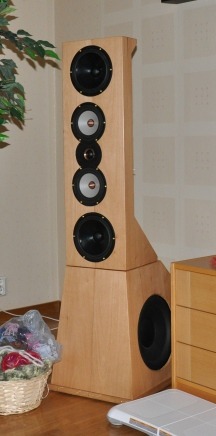
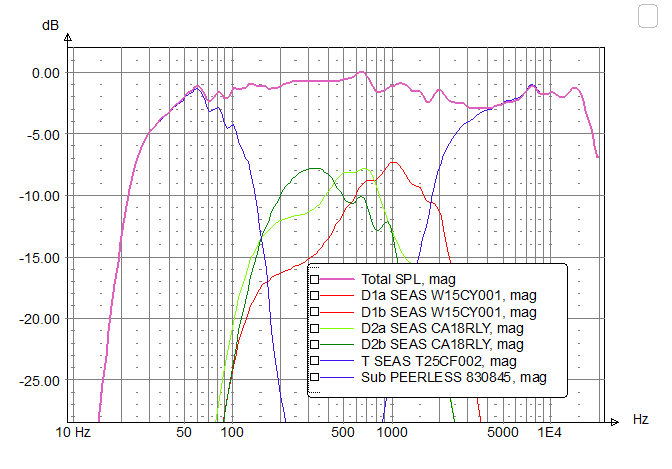
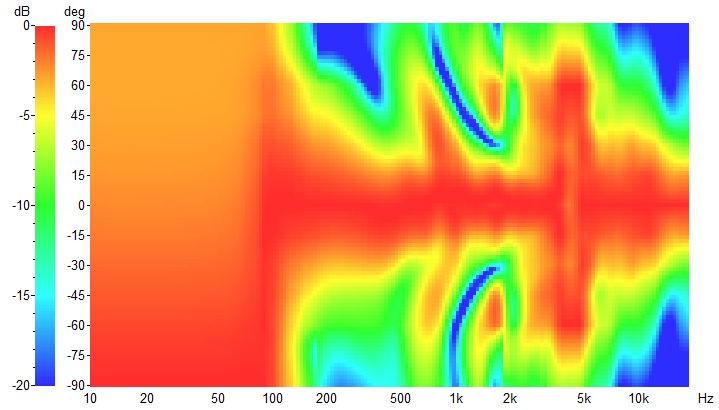
www.ijdata.com/
The newly designed Nangijala speakers, the entire electro-acoustic design (including dipole simulation) was done in LspCAD 6.



Last edited:
looks rather bad to me...
Yet I would wonder if there is correlation with a large decently damped room and a nice "sound picture"
Just a question??? But it doesn't belong here I suppose…
These are my new acrylic open baffle with Fostex FE83EN and two Isophon Isophon full range driver 34 x 18 cm not labeled per side plus two double 18" no-baffle bass modules.
Attachments
These are my new acrylic open baffle with Fostex FE83EN and two Isophon Isophon full range driver 34 x 18 cm not labeled per side plus two double 18" no-baffle bass modules.
how do the no baffle basses sound?
what make?
where do you cut?
parallel? serie?
looks nice!!
- very clean and without pressurizing the room, I have been using these woofers for different OBs for 6 years and I am very satisfied with themhow do the no baffle basses sound?
what make?
where do you cut?
parallel? serie?
looks nice!!
- Alphard HW 1800 - woofers popular in Poland for OB use
- active cut @ ~80-90 Hz
- woofers parallel, Isophons also
- thanks!
UTAH D8P 8" GUITAR DRIVER . would that sound good in a big open baffle with no crossover driven by a dynaco vta st -120 tube amp ? There are 2 pairs available at about $225.00 a pair . new in box , could find nothing on google.they look very good and way more robust than the new drivers i see. i know its a risk but ...
Hi,
I'd suggest, for LF, there should be at least some minimal baffle. Completely baffle-less is good for mid and above, but for LF, it's too harsh a condition for the woofers, and, appearance aside, no real benefit.
Even some soft material like wool felt or sheet rubber is better than nothing (air).
I'd suggest, for LF, there should be at least some minimal baffle. Completely baffle-less is good for mid and above, but for LF, it's too harsh a condition for the woofers, and, appearance aside, no real benefit.
Even some soft material like wool felt or sheet rubber is better than nothing (air).
UTAH D8P 8" GUITAR DRIVER . would that sound good in a big open baffle with no crossover driven by a dynaco vta st -120 tube amp ? There are 2 pairs available at about $225.00 a pair . new in box , could find nothing on google.they look very good and way more robust than the new drivers i see. i know its a risk but ...
This is a gallery only.
Hi,
I'd suggest, for LF, there should be at least some minimal baffle. Completely baffle-less is good for mid and above, but for LF, it's too harsh a condition for the woofers, and, appearance aside, no real benefit.
Even some soft material like wool felt or sheet rubber is better than nothing (air).
If you cross active and the 18" woofers has Qts above 1 you really don't need an additional baffle, except the woofers itself, for home use. Usually 60 cm is said to be enough for OB, here I have 46 cm - and it is enough.
For most 'normal' music, yes I believe it'd be 'enough' for moderate level. But in my experiences, baffleless dipole bass would be insufficient for both quite and loud playback.
For loud, its obvious the limitation is in the excursion. I once bottomed out the woofer (also 18", with 6mm Xmax / 18mm Xlimit) in a movie. Not very loud actually, it's very low, thus huge stroke. At that time I used 3 channels with one 18" per ch. Now you have 2 stacked per side, maybe it's in a better situation than my case.
For playing quiet, it would be some kind of non-linear fast roll-off. It drops below the loudness thing. I encounter similar effect in the lower part of my baffle-less mid, too.
FYR
For loud, its obvious the limitation is in the excursion. I once bottomed out the woofer (also 18", with 6mm Xmax / 18mm Xlimit) in a movie. Not very loud actually, it's very low, thus huge stroke. At that time I used 3 channels with one 18" per ch. Now you have 2 stacked per side, maybe it's in a better situation than my case.
For playing quiet, it would be some kind of non-linear fast roll-off. It drops below the loudness thing. I encounter similar effect in the lower part of my baffle-less mid, too.
FYR
Your bass modules "hide" very well behind the acrylic baffles. How much is their unusual orientation (perpendicular to the other baffle) the result of aesthetical considerations and how much the best acoustical position?
It is both: aesthetics and acoustics. After hearing Gradient's open baffles I decided to try this position, which turned out to "work" in Finnish speakers. Before I believed such orientation will result in no bass in the seating place. However due to room acoustics and wave reflections from walls and cupboard it really works. However I spent a while on choosing their best position and angle...
I read about the Wharfedale SFB long time ago but thought it was an outdated design. Then I read Troels Gravesens new interpretation of the design and got intrigued. I have a scruffy packing crate plywood sheet 1200x1600x12mm. I have eight Seas alnico 10" woofers with a Qt of 0.7 and Fr of 34 Hz. And several other Seas vintage drivers. To that I bought 12 meters of wood with the cross section 120x21mm to the cost of about 15 dollar.
Building and Measurements
I cut the board in half and cut holes for the drivers, then I added a 120 mm deep frame around the perimeter of the boards as well as some extra braces with leftovers.

I screwed the driver in place with 104 screws!
Added a crossover consisting of electrolytic capacitors from West-Germany.
So 4 Seas 25TV-EW per side then 1 Seas 21TV-EW capacitor coupled and finally 3 of the Seas 9TV-LG that is mounted on a metal bracket angling the outer tweeter about 15 degrees to the side.

Mounting the drivers on the baffle lowers the resonance from 34 to 28 Hz. Two impedance peaks at 55 and 70 Hz turns up as well

A Omnimic measurement just in front to one of the dust caps show the dips in response at 55 and 70 Hz otherwise good response from 30 to 300 Hz

Listening test
Room 6x4 m with the speakers on the standing about 1 m in front of the shorter wall.
Equipment: Philips CD473 NADC320 BEE, the cheapest cables and loudspeaker cables with visible oxidation.
Reference equipment: Maranz CD5001, Cambridge C500 SAnsui BA-F1 Stridbeck TLS (think IMF80) Decent cables.
Music NADs first test CD, BIS CD-232Kroumata Percussion Ensemble, Laleh and Rammstein.
I have heard the KODO drummers from the NAD cd and the Kroumata group several times live as well as heard it using my large TLS speakers. I had little expectations for these flimsy baffles.
To my surprise it sound really good, the baffles connect to the room in a way that I last had at home with DIY Klipsch corner horns. The piano on the NAD CD is in the room more so than how it sound with the large TLS. The percussion on Kroumata and Kodo is better with the baffle closer to what I remember of live sound.
Lalehs singing and acoustic music is portrayed well. Finally Rammstein at close to concert level to get that physical experience. Loud and clean and only about 2mm cone motion. Probably not much bass below 50 Hz or so.
Conclusions:
I have to build proper baffles, a modern interpretation of the SFB. Drivers from Norway, eight of them per set adding the kick, the name of the speakers has to be Sleipnir.
Building and Measurements
I cut the board in half and cut holes for the drivers, then I added a 120 mm deep frame around the perimeter of the boards as well as some extra braces with leftovers.

I screwed the driver in place with 104 screws!
Added a crossover consisting of electrolytic capacitors from West-Germany.
So 4 Seas 25TV-EW per side then 1 Seas 21TV-EW capacitor coupled and finally 3 of the Seas 9TV-LG that is mounted on a metal bracket angling the outer tweeter about 15 degrees to the side.

Mounting the drivers on the baffle lowers the resonance from 34 to 28 Hz. Two impedance peaks at 55 and 70 Hz turns up as well

A Omnimic measurement just in front to one of the dust caps show the dips in response at 55 and 70 Hz otherwise good response from 30 to 300 Hz

Listening test
Room 6x4 m with the speakers on the standing about 1 m in front of the shorter wall.
Equipment: Philips CD473 NADC320 BEE, the cheapest cables and loudspeaker cables with visible oxidation.
Reference equipment: Maranz CD5001, Cambridge C500 SAnsui BA-F1 Stridbeck TLS (think IMF80) Decent cables.
Music NADs first test CD, BIS CD-232Kroumata Percussion Ensemble, Laleh and Rammstein.
I have heard the KODO drummers from the NAD cd and the Kroumata group several times live as well as heard it using my large TLS speakers. I had little expectations for these flimsy baffles.
To my surprise it sound really good, the baffles connect to the room in a way that I last had at home with DIY Klipsch corner horns. The piano on the NAD CD is in the room more so than how it sound with the large TLS. The percussion on Kroumata and Kodo is better with the baffle closer to what I remember of live sound.
Lalehs singing and acoustic music is portrayed well. Finally Rammstein at close to concert level to get that physical experience. Loud and clean and only about 2mm cone motion. Probably not much bass below 50 Hz or so.
Conclusions:
I have to build proper baffles, a modern interpretation of the SFB. Drivers from Norway, eight of them per set adding the kick, the name of the speakers has to be Sleipnir.
- Home
- Loudspeakers
- Multi-Way
- Ultimate Open Baffle Gallery
